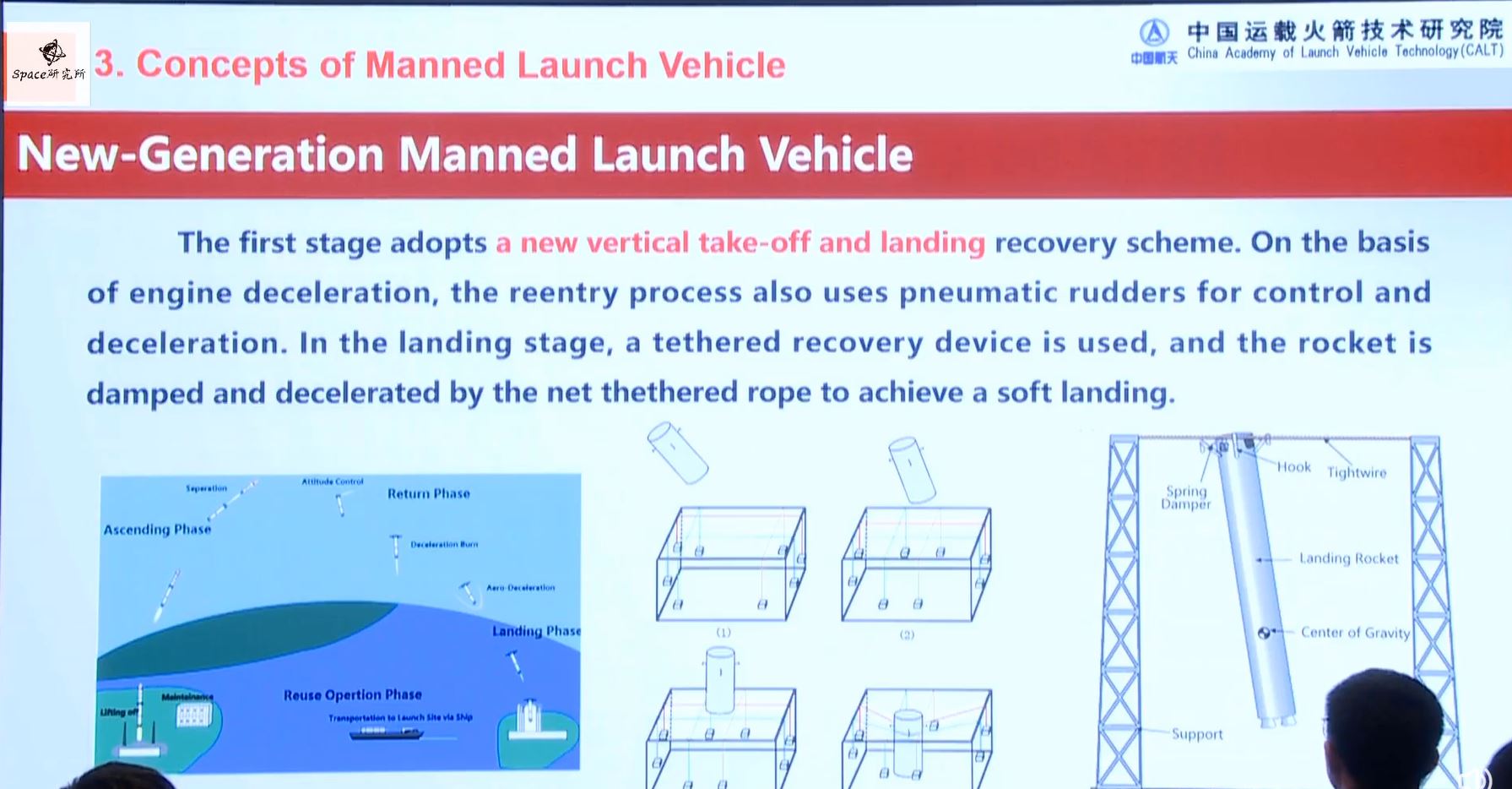China is planning for its next-generation crew launch vehicle for missions to its space station and the moon to have a reusable first stage.
The new rocket would allow a reusable launch option for sending astronauts or cargo to China’s new Tiangong space station, while a larger version would allow China to send crew on lunar and deep space missions.
It will also be capable of carrying a new, larger spacecraft than the Shenzhou currently used by the China National Space Administration for crewed missions, according to the China Aerospace Science and Technology Corporation (CASC), the country’s main space contractor.
The rocket currently goes by the cumbersome placeholder name of “New-Generation Manned Launch Vehicle.” After completing its launch role, the first stage will restart its engines to help it decelerate, using grid fins for guidance, much like the pioneering Falcon 9 rockets flown by SpaceX.
Related: The latest news about China’s space program
However the landing phase will feature “tethered landing devices” according to Wang Xiaojun, president of China Academy of Launch Vehicle Technology (CALT), the CASC subsidiary developing the rocket, at a Feb. 17 event organized by the International Astronautical Federation, the Chinese Society of Astronautics and CALT. Instead of using landing legs, the descending rocket stage will carry hooks and will be caught by tightwires.
CASC did not reveal when the rocket will be ready, but China’s recently released space white paper outlined key tasks for the next five years (2021-2025), which included the first launch of the new crew launch vehicle.
China currently launches its crewed missions with the expendable Long March 2F rocket, which also uses toxic and therefore dangerous and expensive to manage hypergolic propellant.
The new rocket will use refined RP-1 kerosene fuel and liquid oxygen, building on engines developed for China’s newer Long March 5, 6, 7 and 8 rockets. It will come in two variants: a two-stage version to send astronauts to the Chinese space station and a three-stage version with two side boosters for deep space missions.

The smaller version will be capable of launching around 30,800 pounds (14,000 kilograms) to low Earth orbit when recovering the first stage, which would allow it to carry a new generation crew spacecraft which had an uncrewed test flight in 2021. It can carry (18,000 kilograms) when the first stage is expended.
The larger version will be able to launch 59,500 pounds (27,000 kilograms) into lunar transfer orbit. That means it could launch a larger, heavier version of the new crew spacecraft optimized for lunar and deep space missions. Two launches of the rocket could be used for a short-term crewed lunar landing mission, CALT’s veteran Long March rocket designer Long Lehao said in June 2021, according to SpaceNews.
China does not yet have a reusable rocket, meaning it has a number of technology breakthroughs to make first.
CASC has however stated it aims to convert the Long March 8 first stage to be reusable, while a number of commercial launch companies including Landspace, iSpace, Galactic Energy, Deep Blue Aerospace and more are working on their own concepts vertical takeoff, vertical landing rockets.
Follow us on Twitter at @Spacedotcom and on Facebook.

